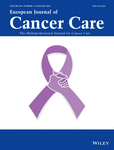Economic evaluation of GPs’ direct access to computed tomography for identification of brain tumours
Funding information
This project has been funded by a grant from the Brain Tumour Charity (GN-000295) as part of a programme of work on understanding the diagnostic pathway for brain tumours in adults and its potential impact on clinical care and outcomes. WH is the joint PI of the multi-institutional ‘CanTest’ Research Collaborative funded by a Cancer Research UK Population Research Catalyst award (C8640/A23385).
Abstract
Background
When GPs suspect a brain tumour, a referral for specialist assessment and subsequent brain imaging is generally the first option. NICE has recommended that GPs have rapid direct access to brain imaging for adults with progressive sub-acute loss of central nervous function; however, no studies have evaluated the cost-effectiveness.
Methods
We developed a cost-effectiveness model based on data from one region of the UK with direct access computed tomography (DACT), routine data from GP records and the literature, to explore whether unrestricted DACT for patients with suspected brain tumour might be more cost-effective than criteria-based DACT or no DACT.
Results
Although criteria-based DACT allows some patients without brain tumour to avoid imaging, our model suggests this may increase costs of diagnosis due to non-specific risk criteria and high costs of diagnosing or ‘ruling out’ brain tumours by other pathways. For patients diagnosed with tumours, differences in outcomes between the three diagnostic strategies are small.
Conclusions
Unrestricted DACT may reduce diagnostic costs; however, the evidence is not strong and further controlled studies are required. Criteria-based access to CT for GPs might reduce demand for DACT, but imperfect sensitivity and specificity of current risk stratification mean that it will not necessarily be cost-effective.
CONFLICT OF INTEREST
P.M.B. and W.H. report grants from the Brain Tumour Charity, during the conduct of the study. E.K. reports personal fees from Novartis Pharma and Pfizer Inc., outside the submitted work.
Open Research
DATA AVAILABILITY STATEMENT
The data that support the findings of this study are available from the CPRD but restrictions apply to the availability of these data, which were used under licence for the current study, and so are not publicly available. Data are however available from the authors upon reasonable request and with permission of the CPRD.




